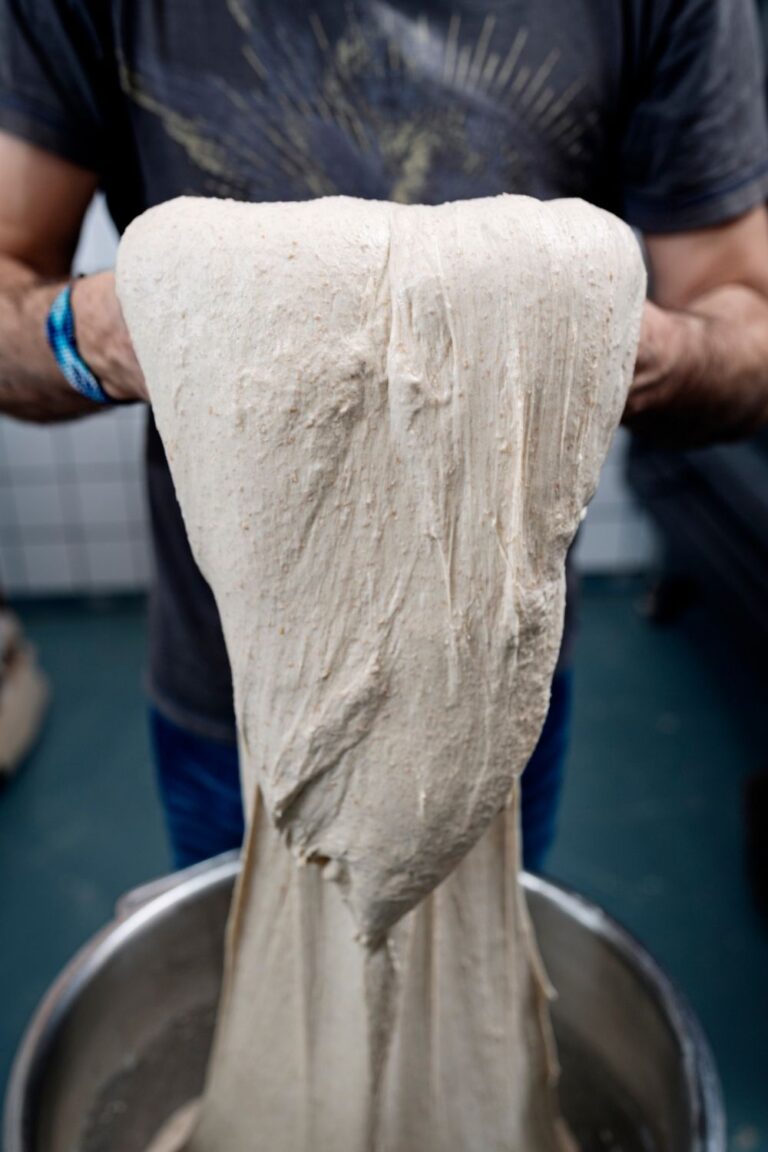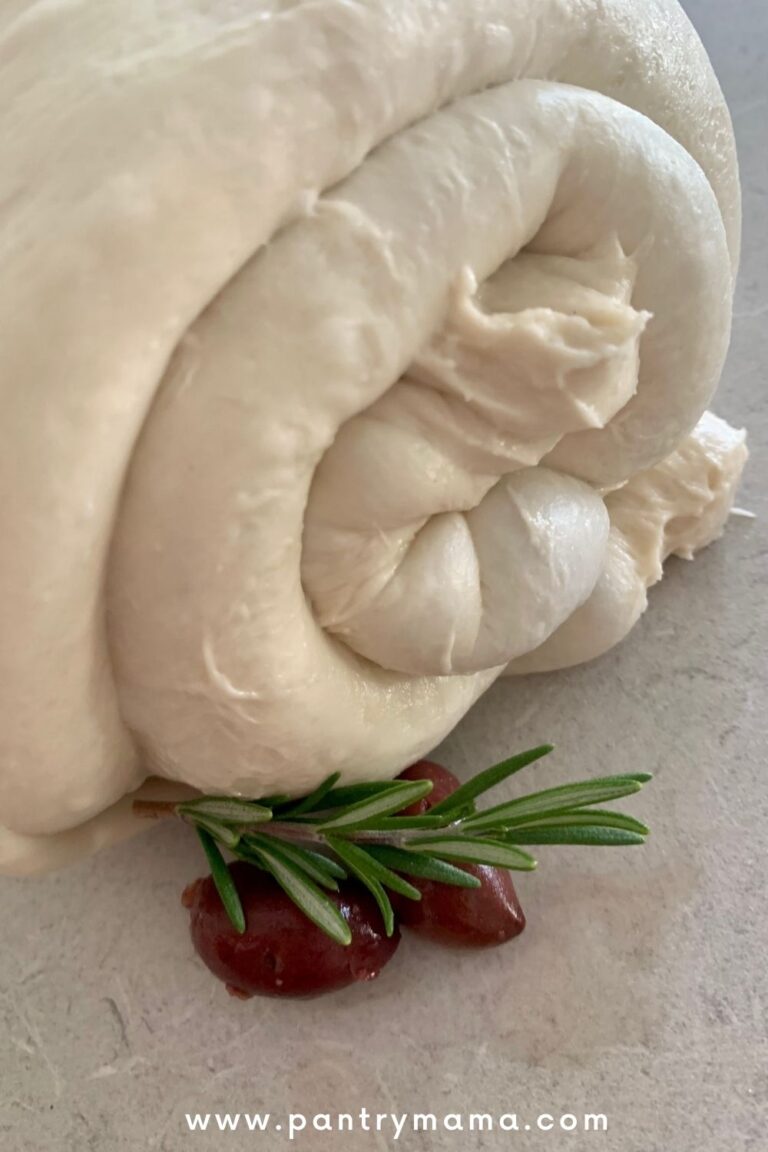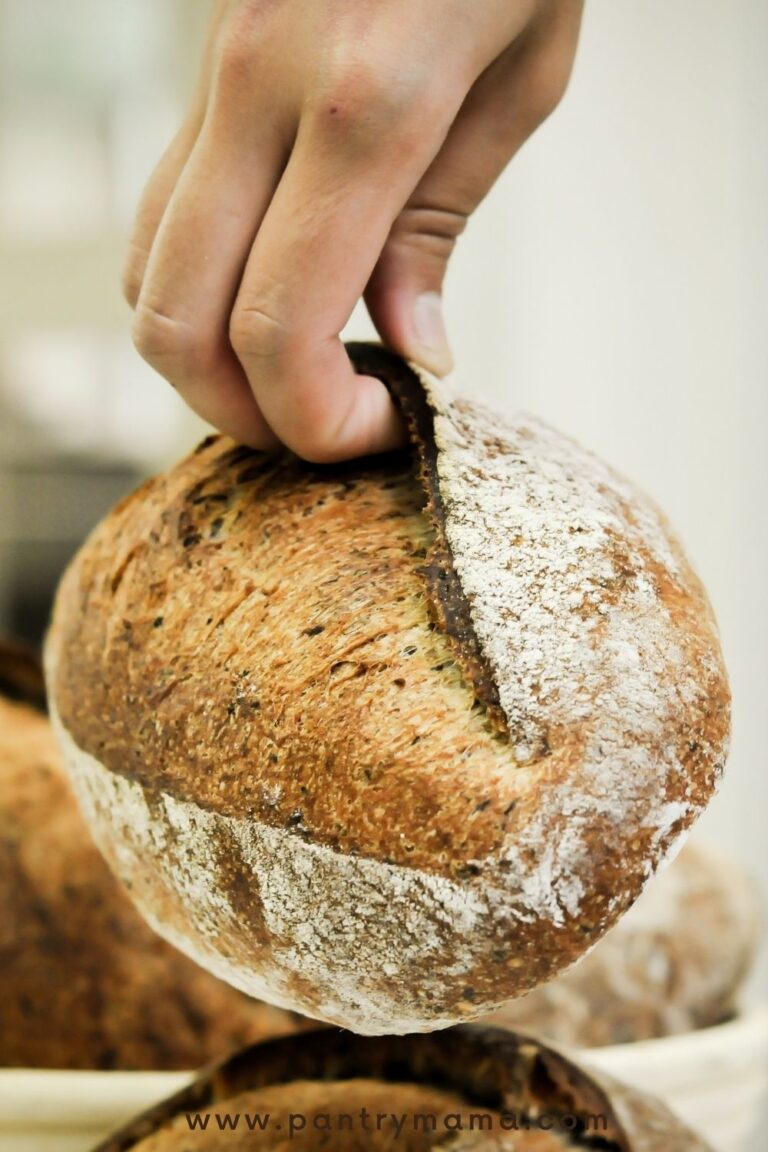Differences Between A Levain And A Sourdough Starter
This post may contain affiliate links.
Have you ever wondered what the differences between a levain and a sourdough starter are?
When baking sourdough bread, you will likely see recipes that include a sourdough starter as you would expect. However, some recipes may refer to the sourdough starter as a levain - something you may not have heard of.
Both a levain and a sourdough starter can be used to create sourdough bread but there are subtle differences between the two, as well as some similarities.
Knowing what a levain and a sourdough starter are and how they are formed can really help when you get down to baking sourdough bread.
You may prefer one preferment to the other and the versatility of understanding the benefits of one over the other could mean finding new levels in your sourdough baking.
In this guide, we will look at both a sourdough starter and a levain, what they are, how they differ, and how similar they are too.
We'll also look at preferments and how they fit into the levain/sourdough starter dialogue.
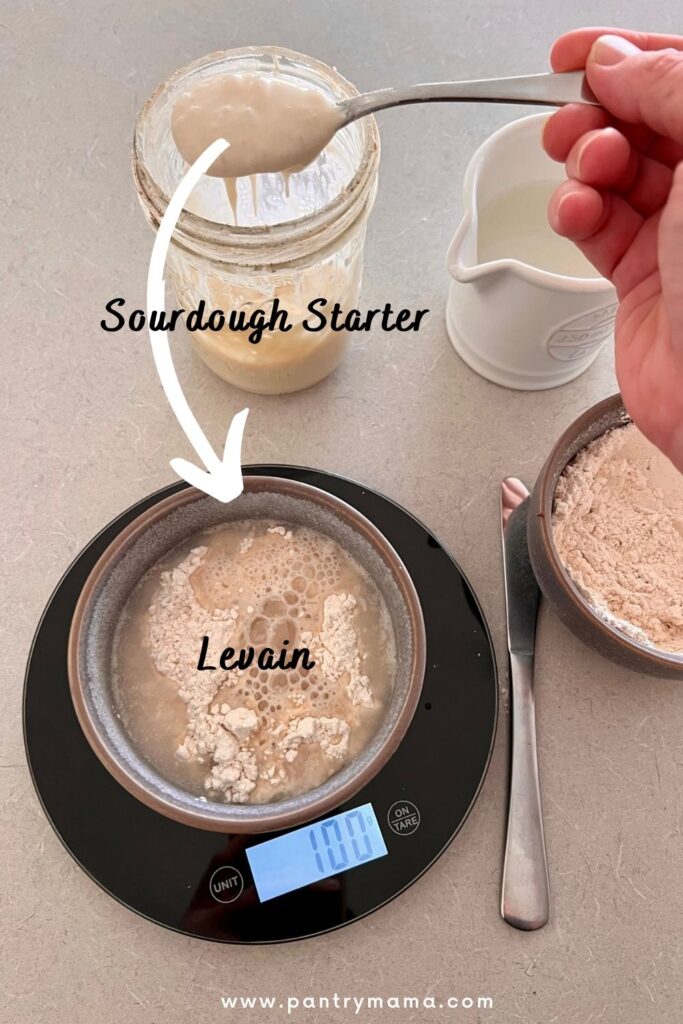
What Is A Sourdough Starter?
Essentially sourdough starter is a SCOBY - a symbiotic culture of bacteria and yeast. It is made from mixing flour and water and letting them ferment over a period of weeks to create this colony of clever micro organisms that can eventually make bread rise.
Sourdough starters can made from a variety of flour but generally once you pick a flour, you stick with that flour for the life of your sourdough starter.
If fed regularly and stored correctly, a sourdough starter will live on indefinitely.
As the prime ingredient for baking sourdough bread, getting your sourdough starter right takes some patience, but it really is a worthwhile process.
What Is A Levain?
A levain is a larger, younger version of your sourdough starter in that you are taking a small part of your starter (perhaps 50g) and feeding it with a larger volume of flour and water (anywhere from 50g to 500g depending on how much levain you need). It is basically a bigger version of your sourdough starter.
Levain can be translated as "sourdough" in French which makes things even more confusing when are first starting out on your sourdough journey. In English, we would refer to "levain" as leaven (pronounced like heaven).
If you decide not to use your sourdough starter directly in a dough, this is where your levain comes in.
Let me explain further. Most people only keep a small amount of sourdough starter (maybe between 50 to 100g). This can sometimes be referred to as the "mother" as it is a permanent starter that is kept indefinitely.
A levain is flexible and can be created in whatever size and even flavor you desire.
It is considered less acidic and lighter in flavor than your actual starter because it's a fresher version.
Essentially, the levain is an off-shoot that you can change up as you see fit for the recipe you want to bake, so you could alter the hydration or the flour makeup to ensure you have the preferment just how you want it.
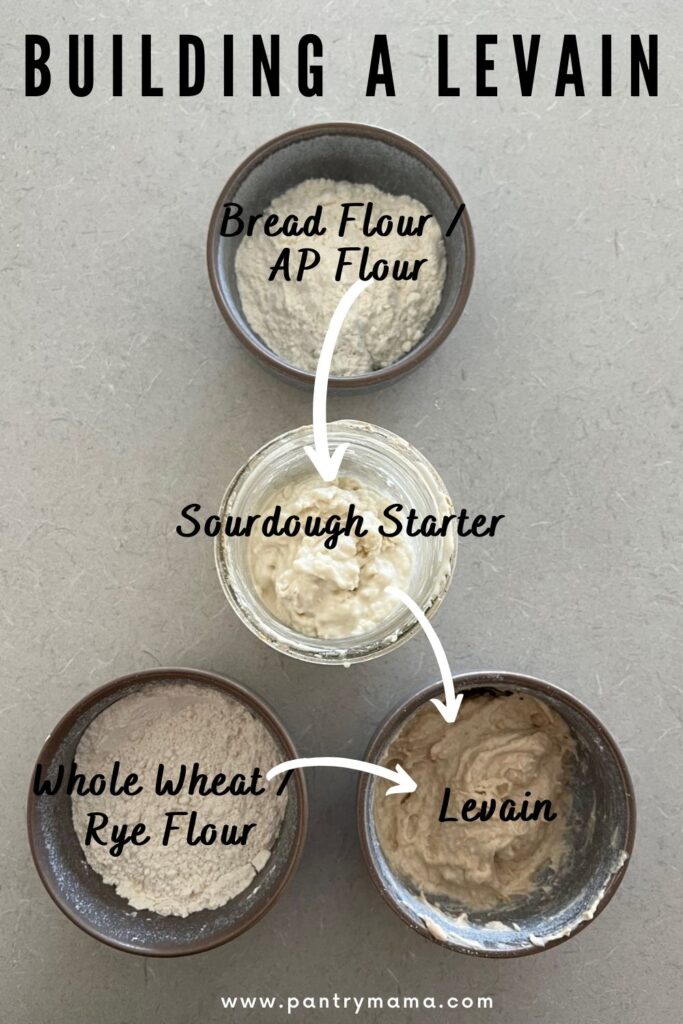
Why Build A Levain When You Already Have a Sourdough Starter?
You could choose to build a levain from your sourdough starter for a few reasons:
- Use a different flour to your actual sourdough starter
- Keep a "mother sourdough" in the fridge for less bothersome feeding
- Experiment with sourdough starter without damaging your original starter
- Make a Sweet Sourdough Levain
Using Different Flour to Your Starter
For example, you might want to bake a sourdough bread with wholewheat and rye flour. While you can use a sourdough starter that's been fed with all purpose or bread flour, sometimes it can be beneficial to your bake to build a levain using the flour that you'll be baking with.
So you could take 20g of your sourdough starter and feed it with 40g of whole wheat and 40g of rye and 80g of water and build a specific levain for your recipe.
You would leave your regular sourdough starter in the fridge, using the freshly created levain in your baking that day.
You'll find more information on how to change the flour you feed your sourdough starter here.
Keeping Sourdough Starter In The Fridge
If you're keeping your sourdough starter in the fridge between bakes, an easy way to not have to feed it all the time is to just create a levain when you are wanting to bake.
So the day before you want to bake you could remove 20g of sourdough starter from the jar in the fridge. Then and add 50g of flour and 50g of water and leave until it's doubled.
You'd only need to feed the sourdough starter in the fridge when it's getting low (down to the last 20g). When storing your sourdough starter, always make sure you're using the right size jar.
Experimenting With Sourdough Starter Using a Levain
I'm a big advocate for only having one sourdough starter. You can read my opinion on this here.
Once you have a healthy sourdough starter, you can experiment with your sourdough starter by building levains with anything you choose!
Want to see the effect of whey in your sourdough? Build a levain and add whey instead of water. Curious to see how your starter will react to rye flour or stone ground flour? Build a levain and find out.
Using small amounts of sourdough starter to build levains ensures that you don't harm your healthy starter with experimental additions.
Make A Sweet Sourdough Levain
Sometimes it can be beneficial to a bake to create a sweet levain.
You can create a sweet levain by adding sugar to the flour and water you build the levain with.
I use a sweet levain when I make Sourdough Fruit Bread with Cinnamon and Honey.
Sugar is not typically added to sourdough starter as it's really unnecessary to the actual starter creation.
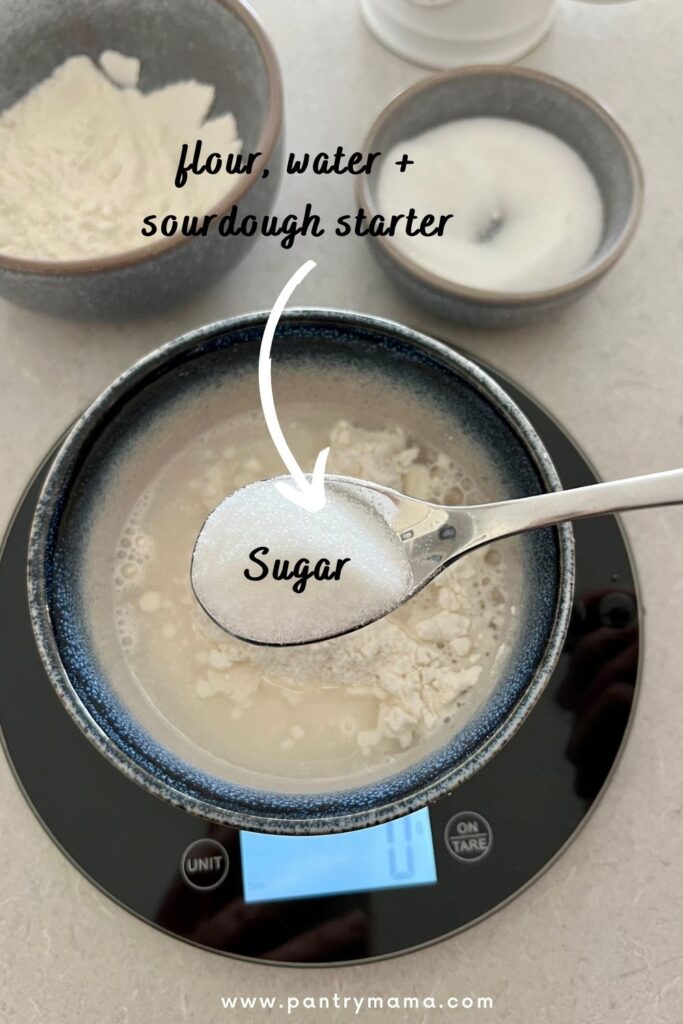
The Differences Between A Levain And A Sourdough Starter
| LEVAIN | SOURDOUGH STARTER | |
| WHAT'S IN IT? | flour, water, yeast + bacteria | flour, water, yeast + bacteria |
| WHAT DOES IT DO? | rises bread | rises bread |
| SIZE | 100g or more (larger) | between 20 - 100g (smaller) |
| LIFETIME | one bake | indefinitely (with regular feeding) |
| TYPE OF FLOUR | flour type can vary depending on the bake (can contain sugar) | generally fed consistently with one type of flour. |
As you can see above, the major differences between a levain and a sourdough starter is the size and lifetime.
A levain is generally used to increase or scale up your sourdough starter, so it's larger in size. But despite its size, it's used for one bake as opposed to a sourdough starter which continutes indefinitely with regular feeding.
Think of the levain as a twig, you still require the main branch and the tree to exist first. The application is also different as you would only use a levain once while a sourdough starter can continue for decades.
Another subtle difference between a levain and a sourdough starter is the flavor. As you can alter the profile of a levain, you can reduce the sour flavor that works to characterize sourdough bread.
By changing up the hydration level or even the temperature the levain ferments at can change how sour the bread will be once baked.
When you do use a levain, you still get the rising qualities of your starter yet you can accommodate for different flour types in the sourdough recipe.
This can make a difference as you no longer have to rely on the flour you used to create the starter.
Let’s say you solely used wholewheat flour for your starter yet for the sourdough bread you want to bake you want to use 75% rye flour instead.
You can still use your wholewheat flour starter yet the rye flour will dominate the recipe and be used to leaven your bread.
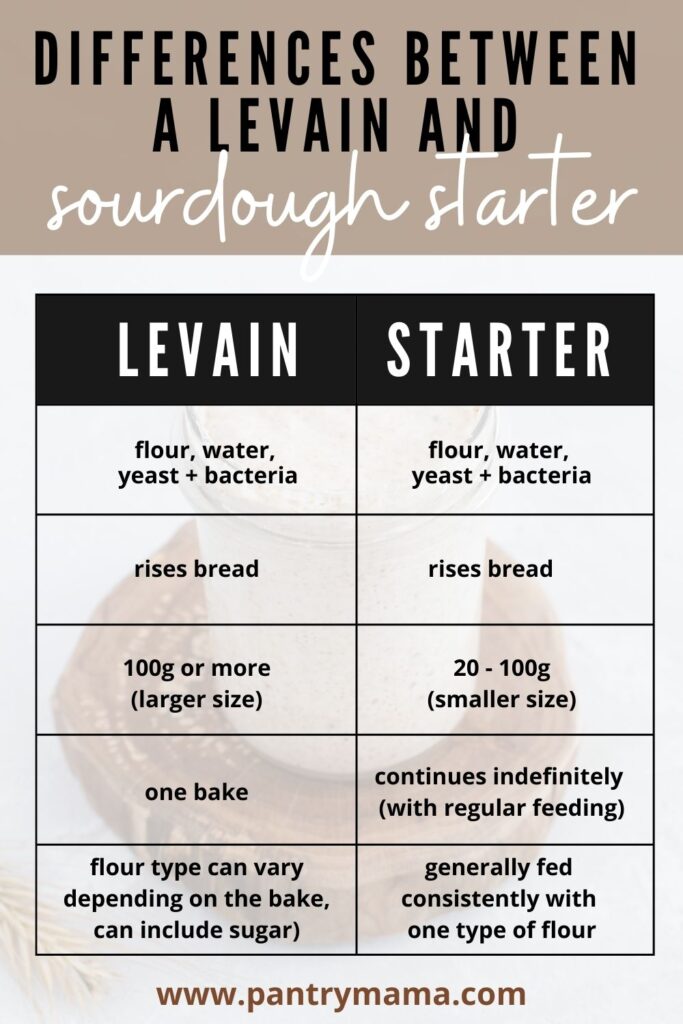
What Is A Preferment?
When learning about preferments, you may be staggered to realize how much versatility there is between such a simple substance.
Each one is basically a blend of flour, water, and a specific leavening agent, typically wild yeast (but commercial yeast can also be used, like in a poolish). The mixture is given time to ferment prior to being incorporated into a dough.
Both sourdough starter and levain are classed as preferments.
The point of preferments is to act a vehicle to add the yeast and bacteria to sourdough.
That all largely comes from the fermentation time that the preferment is given as the flavor is developed from organic acids and alcohols.
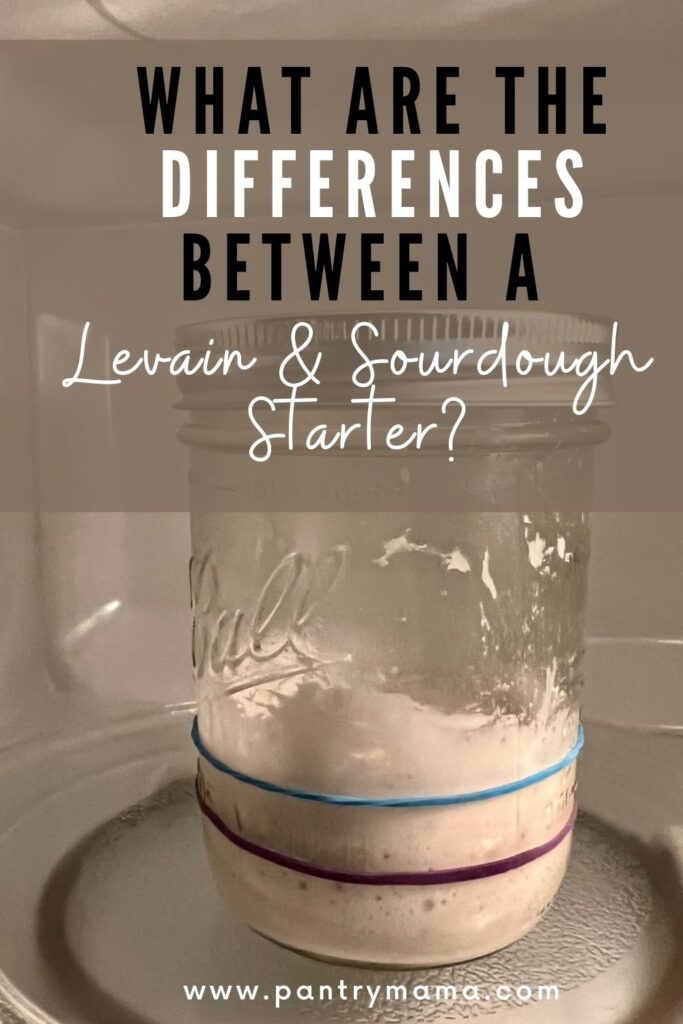
Though both a levain and a sourdough starter are used to help bread rise, the main differences are in how they are used.
A levain is only used once and can be altered to accommodate the flour makeup of a certain sourdough bread recipe or be used in pastries and desserts.
However, a sourdough starter can be maintained for decades as the live mix continues to thrive (or is dried for storage).
Use the starter as the basis for your sourdough but also use it to form a levain which you can change up to create so much more.
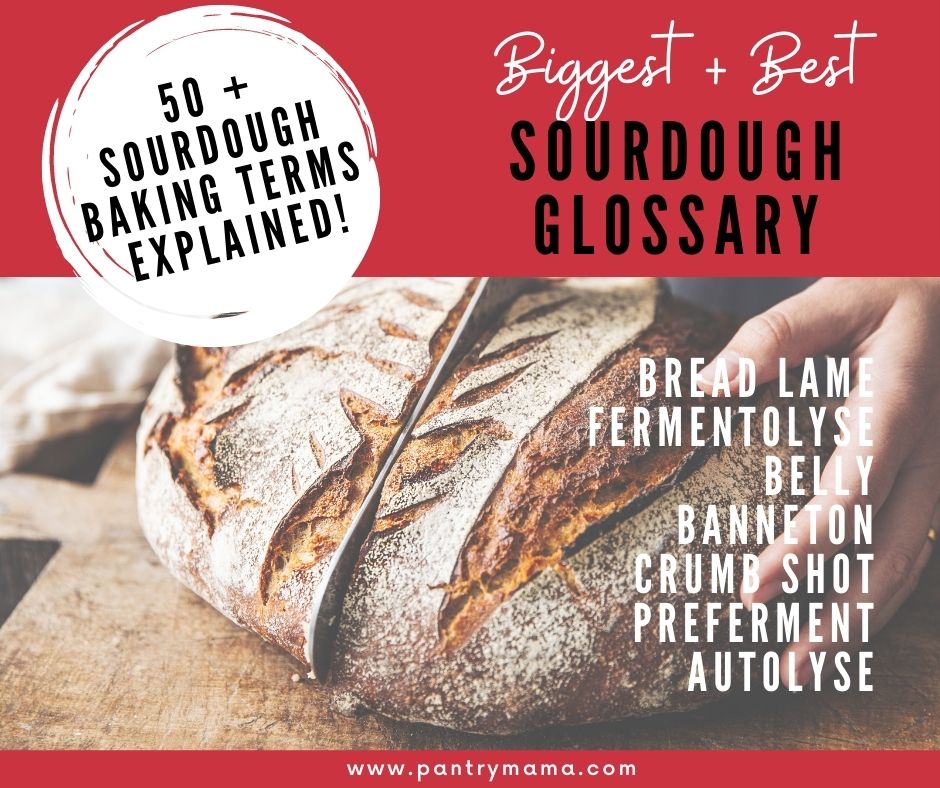
Want More Info?
Looking for more info around sourdough starters and levains? You might find these articles handy:
- Yeast vs Sourdough Starter - What's The Difference?
- Should You Make a Sourdough Starter or Buy One?
- Where Does the Yeast In A Sourdough Starter Come From?
- 5 Tips for Boosting A Sourdough Starter


